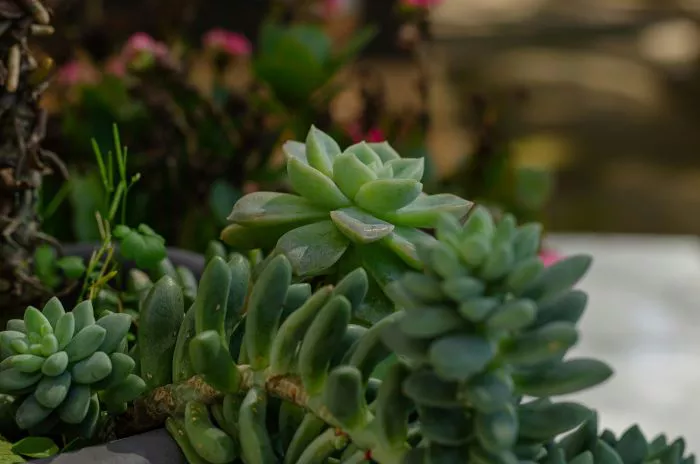Echeveria succulents are among the most popular plants in the succulent family. Known for their stunning rosettes and vibrant colors, these plants are a favorite among gardeners and collectors. Understanding the growth habits and size potential of Echeveria succulents is essential for anyone looking to cultivate these beautiful plants. This article provides a professional overview of how big Echeveria succulents can get, factors influencing their size, and tips for proper care.
Introduction to Echeveria Succulents
Echeveria is a genus of flowering plants in the Crassulaceae family, native to Central America. These succulents are characterized by their fleshy leaves that form rosettes. Echeveria plants come in various colors, shapes, and sizes, making them highly sought after for decorative purposes. They are often used in gardens, containers, and indoor arrangements.
Size Range of Echeveria Succulents
Echeveria succulents can vary significantly in size depending on the species and growing conditions. Generally, Echeveria plants grow to be between 6 inches and 12 inches in height. The diameter of the rosettes can range from 3 inches to 12 inches or more. Some popular varieties include:
Echeveria elegans: Also known as the Mexican Snowball, this variety typically grows to about 6 to 8 inches in diameter.
Echeveria ‘Lola’: This beautiful succulent can reach a diameter of up to 10 inches, with a height of around 6 inches.
Echeveria runyonii: Commonly known as the Topsy Turvy, this plant can grow to about 6 to 8 inches tall and about 10 inches wide.
Echeveria ‘Perle von Nurnberg’: This cultivar can reach a size of approximately 6 to 10 inches in diameter.
As a general rule, most Echeveria varieties will remain relatively compact, making them ideal for small spaces and container gardening.
Factors Influencing Size
Several factors influence the size of Echeveria succulents. Understanding these factors can help you manage their growth effectively.
Species Variation: Different species of Echeveria have distinct growth habits and potential sizes. Some species naturally grow larger than others. Researching the specific variety you own can provide insight into its expected size.
Growing Conditions: The environment in which Echeveria succulents are grown significantly affects their size. Adequate light, temperature, and humidity play crucial roles in their growth. Echeveria thrives in bright, indirect sunlight. Insufficient light can lead to leggy growth and smaller plants.
Soil Quality: Well-draining soil is essential for healthy Echeveria growth. A poor soil mix can lead to root rot and stunted growth. Using a commercial cactus mix or creating a well-draining soil blend can promote healthy development.
Watering Practices: Echeveria succulents are drought-tolerant and prefer to dry out between waterings. Overwatering can lead to root rot, while underwatering can cause stress and hinder growth. Finding the right balance is key to achieving optimal size.
Container Size: The size of the container can also impact the growth of Echeveria succulents. A pot that is too small can restrict root growth, while a pot that is too large may retain excess moisture. Choosing the right pot size allows the plant to grow to its full potential.
Growth Rate of Echeveria Succulents
Echeveria succulents typically have a moderate growth rate. Under ideal conditions, they can grow several inches in a single growing season. The growth rate may slow down during the fall and winter months when the plant enters dormancy.
Spring and Summer Growth: During the growing season, Echeveria succulents will actively produce new leaves and may increase in size. Providing adequate sunlight and water during these months can promote healthy growth.
Fall and Winter Dormancy: In the fall and winter, Echeveria succulents will slow down their growth. It is essential to adjust watering during this time, as the plants require less moisture. Overwatering during dormancy can lead to root issues.
Caring for Echeveria Succulents to Maximize Size
To help Echeveria succulents reach their maximum size, proper care is essential. Here are some tips to ensure healthy growth.
Provide Adequate Light: Place Echeveria succulents in a location where they receive bright, indirect sunlight. If growing indoors, a south or west-facing window is ideal. If the leaves begin to stretch or lose color, it may indicate insufficient light.
Use Well-Draining Soil: Choose a potting mix specifically designed for succulents or cacti. This type of soil allows excess water to drain away, preventing root rot and promoting healthy growth.
Water Correctly: Water Echeveria succulents thoroughly, allowing the soil to dry out completely between waterings. During the growing season, this may mean watering every one to two weeks, while in winter, watering may be reduced to once a month.
Fertilize Sparingly: During the growing season, a diluted, balanced fertilizer can be applied once a month. However, Echeveria succulents do not require heavy feeding and can thrive with minimal fertilization.
Repot When Necessary: If your Echeveria becomes root-bound or outgrows its pot, consider repotting into a slightly larger container. This will provide more space for root growth and help the plant reach its full size potential.
Conclusion
Echeveria succulents are beautiful and versatile plants that can add charm to any garden or indoor space. While most Echeveria varieties grow to a manageable size of 6 to 12 inches, various factors influence their growth potential. By understanding these factors and providing proper care, you can help your Echeveria succulents thrive and reach their maximum size. Whether you are a seasoned gardener or a beginner, Echeveria succulents offer a rewarding experience that showcases the beauty of nature. With the right attention, these stunning plants can flourish and enhance your living space for years to come.


